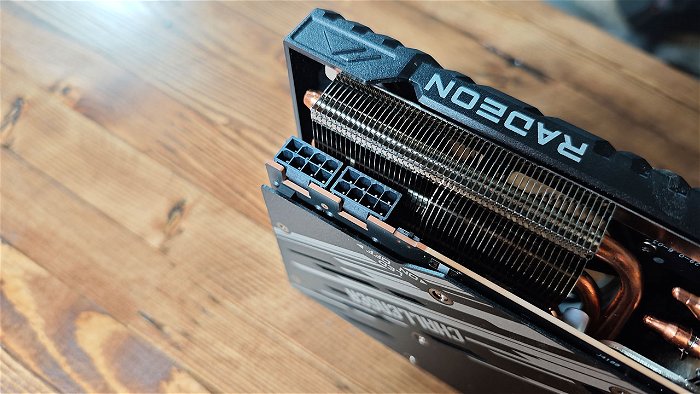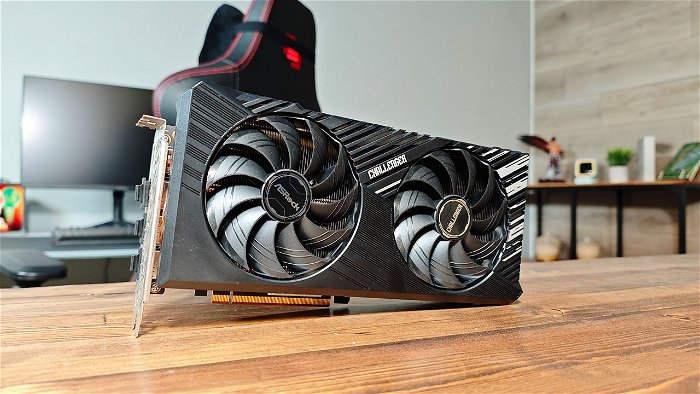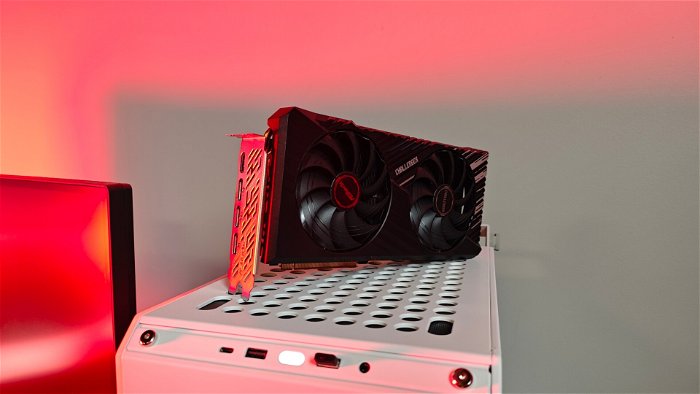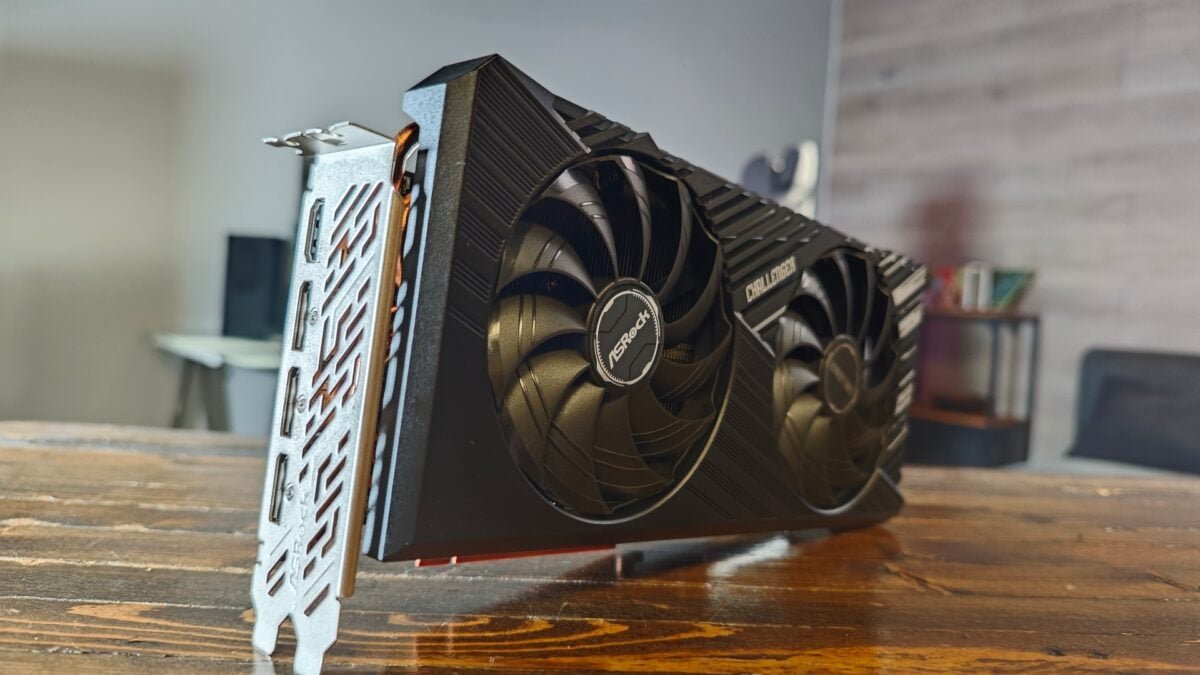The AMD Radeon RX 7900 GRE GPU (also known as the Golden Rabbit Edition) is a unique new offering targeting mainstream gamers who want strong 1440p and entry-level 4K performance made for the mid-range gamer. With solid performance and a great entry point for the AMD RDNA 3 family, it strikes a solid balance between price and performance, even if it struggles at some 4K workflows.
The AMD Radeon RX 7900 GRE graphics card was first released to target the Chinese market, delivering performance capable for many gaming and computing tasks while falling short of reaching the heights of the top-end cards in the RDNA 3 family of GPUs. Even though it started life made for China, AMD has decided to bring the GPU to the US, giving a new mid-range gaming and content creator-focused card that offers just enough to make it worth considering over the Radeon 7800 XT.

What makes the AMD Radeon RX 7900 GRE so interesting is how AMD positioned this card, especially in an ever more competitive GPU market. Slotting into AMD’s RDNA 3 lineup below the flagship Radeon RX 7900 XTX and 7900 XT models, the RX 7900 GRE delivers solid performance by utilizing a slightly cut-down version of the Navi 31 GPU found in its more expensive siblings.
It shares much of the same foundation but makes some smart compromises to hit a more affordable $549 price point, making it perfect for people who demand power but can accept some compromise to make their GPU come in under budget for a new PC build. I still remember when you did not need to spend $1000+ to get a decent gaming GPU, and while still far from the prices we saw 10 years ago, the AMD Radeon RX 7900 GRE feels much more in line with how enthusiast cards were priced.
I will admit it: I am spoiled and love the power a 7900 XTX brings to the table, but to put it bluntly, the average person looking to play the latest titles does not need that level of performance. Sure, it is nice to crank every setting and still have it hit over 60FPS at 4K with ray tracing, but it is not entirely necessary, and 1440P gaming is still enjoyed by millions worldwide, with the most used card on Steam as of writing being last generations’ NVIDIA GeForce RTX 3060.

Built on the Navi 31 XL GPU, at the heart of the card is AMD’s RDNA 3 architecture, which brings significant gains in performance, power efficiency, and new features compared to last-gen cards. The 7900 GRE runs 80 compute units clocked at up to 2245MHz boost, which equates to 5120 stream processors, enough to power through the latest games and even ray tracing workflow.
The GPU boasts 16GB of 18Gbps GDDR6 memory across a 256-bit bus, working out to 576GB/s of memory bandwidth. The card has a total board power rating of 260W from its dual 8-pin power connectors. It offers a fair level of power, even for a slightly cut-down card, and on paper, goes head-to-head well against the NVIDIA RTX 4070, delivering better specs and raw performance, even with the lack of CUDA support or DLSS 3.
Focused on 1440p and Entry-Level 4K Gaming
Given how AMD is positioning the card in marketing material and the review guide, the Radeon RX 7900 GRE GPU is designed to excel at 2560 x 1440 and deliver playable framerates at 3840 x 2160. It can tackle any game you throw at it with max settings at 1440p and put up a fight when stepping up to 4K resolution. It is something that we saw done well with the Radeon 7800 XT, so for the slight uptick in price, what the Radeon RX 7900 GRE offers feels very compelling.
“…the Radeon RX 7900 GRE GPU is designed to excel at 2560 x 1440 and deliver playable framerates at 3840 x 2160.”
Slotting the Radeon RX 7900 GRE in our AMD test bench, consisting of an AMD Ryzen 9 7950X, 32 GB DDR5 RAM, and a WD_Black M.2 SSD, all running on an MSI 850 Watt PSU, we were ready to see what the GPU could do.
We ran it through our whole gambit of game benchmarks, including titles such as Assassin’s Creed Valhalla, Cyberpunk 2077, Shadow of the Tomb Raider, Call of Duty: Modern Warfare 2, and Rainbow Six Seige, along with some creative software like Davinci Resolve, the Adobe Suite, and OBS. This range of tests not only gives a good vertical slice of how the GPU fairs in real-world use cases but also lets us see how it fairs against other graphics cards at a similar price point.
1440P Game Benchmarks
| Game | Radeon 7900 GRE | RX 7800 XT | GeForce RTX 4070 | RTX 4070 Super |
|---|---|---|---|---|
| Shadow of the Tomb Raider | 170 | 132 | 162 | 185 |
| Rainbow Six Siege | 494 | 382 | 475 | 482 |
| Cyberpunk 2077 | 101.2 | 104 | 80 | 86.31 |
| Cyberpunk 2077 + RT | 31.22 | 25.85 | 36.81 | 43.69 |
| Cyberpunk 2077 + RT + DLSS | 66.55 | 51.15 | 117.42 | 122.9 |
| Assassin’s Creed Valhalla | 144 | 97 | 113 | 146 |
| Call of Duty: Modern Warfare 2 | 155 | 147 | 105 | 124 |
Out of the gate, the Radeon RX 7900 GRE delivered a solid 21598 in 3D Mark Time Spy benchmark and in testing across our range of titles at 2560 x 1440, the RX 7900 GRE averaged around 100fps, even surpassing the more expensive RTX 4070 Super in several games, a card that already improved upon what the RTX 4070 brought to the table. In games like Call of Duty: Modern Warfare 2, Rainbow Six Siege, and Assassin’s Creed Valhalla, the Radeon RX 7900 GRE was the clear winner, often delivering double-digit FPS games at the same settings.
Looking at the numbers, we see this all makes sense, especially with how AMD positioned the card in the market. Even with the slightly cut-down specs, the Radeon RX 7900 GRE GPU with its 16GB framebuffer gives the card headroom for the future, able to handle higher resolution textures and assets better than the RTX 4070’s 12GB allocation. We saw the 4070 struggle once games exceeded 8-10GB usage, whereas the 7900 GRE kept going strong. If you are planning to run any AI image generation of generative AI features on your PC, this extra VRAM gives it more headway to deliver fast, responsive responses in a range of tasks.
1080P Game Benchmarks
| Game | Radeon 7900 GRE | RX 7800 XT | GeForce RTX 4070 | RTX 4070 Super |
|---|---|---|---|---|
| Shadow of the Tomb Raider | 102 | 78 | 84 | 95 |
| Rainbow Six Siege | 284 | 254 | 241 | 262 |
| Cyberpunk 2077 | 42.77 | 51.82 | 37.14 | 37.27 |
| Cyberpunk 2077 + RT | 15.45 | 12.17 | 17.73 | 20.15 |
| Cyberpunk 2077 + RT + DLSS | 44.9 | 36.55 | 72 | 79.95 |
| Assassin’s Creed Valhalla | 85 | 68 | 67 | 87 |
| Call of Duty: Modern Warfare 2 | 92 | 90 | 63.5 | 75 |
1080P gaming, as expected, also delivered very favourable results, with most games offering up well over 100FPS, even with settings pushed to the max. It was only when we threw ray tracing into the mix that we saw any noticeable slowdown—something we also saw at 1440P—but even then, the various RDNA 3 features like FSR allow even these workloads to deliver playable results. While FSR is not competing head-to-head with DLSS at present, AMD is working to improve compatibility, and provided the game supports some aspect of it, you should achieve somewhat similar results, as we saw with Cyberpunk 2077.
“While the AMD Radeon RX 7900 GRE is clearly targeted at 1440P gaming, we saw it achieve solid results at 4K in many titles…”
While the AMD Radeon RX 7900 GRE is clearly targeted at 1440P gaming, we saw it achieve solid results at 4K in many titles, even if it did struggle, especially compared to bigger NVIDIA cards, but also compared to its more beefy brethren, the Radeon 7900 XTX and Radeon 7900 XT cards. Pushing up to a 4K resolution saw performance drop to around 60fps on average, with dips into the 40s in the most demanding scenes. This makes the 7900 GRE well-suited for entry-level 4K gaming, even if you have to dial back some settings in the latest blockbuster titles.
4K Game Benchmarks
| Game | GeForce RTX 4080 Super | GeForce RTX 4080 | Radeon RX 7900 XTX | GeForce RTX 3080 |
|---|---|---|---|---|
| Shadow of the Tomb Raider | 136 | 127 | 131 | 87 |
| Metro Exodus Enhanced | 82.51 | 70 | 104 | 45 |
| Metro Exodus Enhanced + DLSS + RT | 122 | 79 | 75 | 50 |
| Cyberpunk 2077 | 54 | 79.5 | 80.8 | 45 |
| Cyberpunk 2077 + RT | 30.18 | 29.3 | 31.3 | 17 |
| Cyberpunk 2077 + RT + DLSS | 92.91 | 80.2 | 70 | 39 |
| Assassin’s Creed Valhalla | 114 | 97 | 108 | 72 |
Even games like Assassin’s Creed Valhalla and Call of Duty: Modern Warfare 2 delivered performance well over 60FPS, with eSports titles like Rainbow Six Siege showing over 200FPS with every setting cranked—competitive gamers wanting a card that can deliver over 144 FPS for their latest titles should have no issues employing the Radeon RX 7900 GRE, especially for the pricepoint AMD is setting it at.
RDNA 3 Features and Upgrade Potential

Besides raw performance, the Radeon RX 7900 GRE brings all the features of AMD’s RDNA 3 architecture to more budget-conscious gamers. This includes hardware-accelerated ray tracing for enhanced lighting, reflections, and shadows in supported titles.
As noted earlier, while still behind NVIDIA in overall ray tracing performance, AMD has made big strides to improve efficiency and deliver a baseline ray tracing experience absent from last-gen cards. Games like Cyberpunk 2077 noticeably benefit from having ray tracing enabled on the 7900 GRE, especially if you add frame generation to the mix.
The card also brings to the table features like AMD FidelityFX Super Resolution for boosted frame rates via intelligent upscaling tech, Smart Access Memory for optimized performance with Ryzen CPUs, and DisplayPort 2.1 with DSC 1.2a support. This means the 7900 GRE can manage even next-gen display support, with it easily powering ultra-wide or 4K 144Hz monitors and beyond. This is a level of futureproofing that made the original Radeon 7900 release so compelling, significantly when NVIDIA is lagging behind in this area.
Also, for anyone looking to dive into content creation, as with the full RDNA family, the Radeon RX 7900 GRE brings with it AV1 support. We have touched on AV1 in past reviews for the Radeon RX 7900 XTX and XT, along with the 40-series NVIDIA cards, but to break it down for the uninitiated, AV1 is the latest video encoding standard that is developed for the modern world of streaming and online video.
It allows higher quality video, especially 1080P and 4K, without compromising on quality, all while using less bandwidth. While not every video editing suite supports it, software like Davinci Resolve and OBS have added it to the mix, giving creators new features that last-generation cards simply can not utilize.
Great Value Mid-Range Contender

At $549, the Radeon RX 7900 GRE goes toe-to-toe with NVIDIA’s $599 RTX 4070 Super and largely keeps pace for $50 less. That’s mighty impressive for a card two tiers down from AMD’s top offering. Of course, there are always tradeoffs when buying a mid-range card. The 7900 GRE trails the RTX 4070 Super in ray tracing performance, lacks DLSS 3 frame generation, and can’t quite hit the same 4K gaming heights or be able to support CUDA-based workflows in various software packages.
But AMD was smart with pricing this GPU, giving it a range of selling points, all for less than what NVIDIA delivers with their card aimed at the same general market. The price, large memory allocation, and feature set make it a better value proposition for many gamers. The 16GB framebuffer and next-gen display outputs add considerably more longevity, especially for a card many will hold onto for years down the road.
We don’t fully know how the scalping market will fair for this card, but if you can catch it at MSRP (no small ask), the Radeon RX 7900 GRE deserves strong consideration from Team Red fans wanting a more affordable on-ramp to AMD’s excellent RDNA 3 architecture. It ultimately gave up some performance to NVIDIA’s RTX 4070 Super, but made up significant ground by being $50 cheaper. For gamers looking for one of the best 1440p GPUs on the market, the 7900 GRE is an ace up AMD’s sleeve and a brilliant play at $549. It brings RDNA 3’s powerful capabilities to the mainstream.






